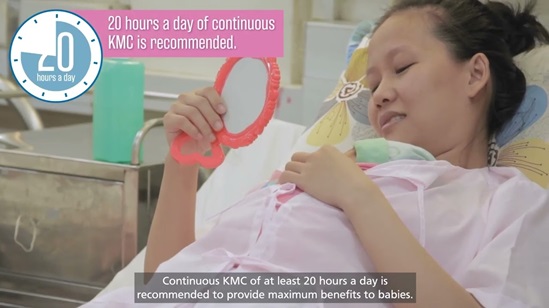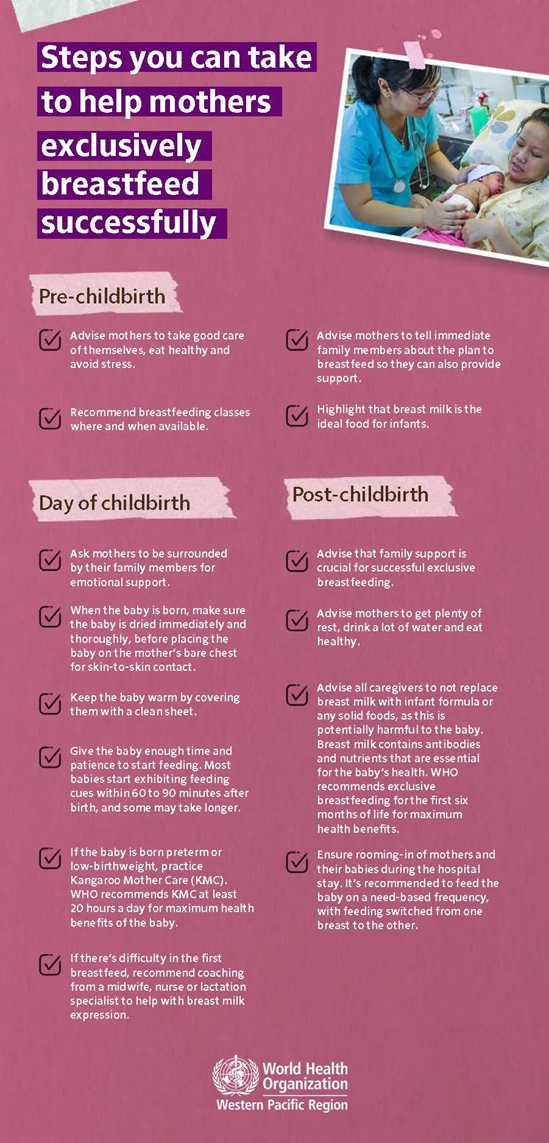Pa Vang (right), a traditional birth attendant, educates women from Hmong community on postnatal care at the district hospital in Lao PDR.
Breastfeeding
Breastfeeding is the best way of providing young infants with the nutrients they need for healthy growth and development. Virtually, all mothers can breastfeed, provided they have accurate information and the support of their family, the health care system and society at large.
WHO recommends exclusive breastfeeding for the first 6 months of life, followed by continued breastfeeding with appropriate complementary foods for up to 2 years and beyond. WHO also recommends early and uninterrupted skin-to-skin contact, rooming-in and kangaroo mother care, which significantly improve neonatal survival and reduce morbidity.
In the Western Pacific, 15 Member States have adopted national legal measures aligned with the International Code of Marketing for Breastmilk Substitutes to protect, promote, and support breastfeeding.
WHO and UNICEF recommend that children initiate breastfeeding within the first hour of birth and be exclusively breastfed for the first 6 months of life – meaning no other foods or liquids are provided, including water.
Infants should be breastfed on demand – that is as often as the child wants, day and night. No bottles, teats or pacifiers should be used.
From the age of 6 months, children should begin eating safe and adequate complementary foods while continuing to breastfeed for up to two years of age or beyond.
WHO actively promotes breastfeeding as the best source of nourishment for infants and young children, and is working to increase the rate of exclusive breastfeeding for the first 6 months up to at least 50% by 2025.
WHO provides guidance to Member States on eliminating exposure of the general public to marketing of breast-milk substitutes and the inappropriate promotion of foods for infants and young children through implementing the International Code of Marketing of Breast-milk Substitutes in the Western Pacific Region.
In addition, WHO works with partners such as the International Labor Organization on maternity protection so that mothers can be with their infants to breastfeed, and with UNICEF on a Baby-Friendly Hospital Initiative to help new mothers initiate breastfeeding after delivery.
Additionally, WHO provides training courses for health workers to provide skilled support to breastfeeding mothers, help them overcome problems, and monitor the growth of children. Health workers are also trained to initiate Early Essential Newborn Care, a set of simple, cost-effective interventions that benefit all mothers and newborns. At its core is First Embrace, a life-saving practice that promotes skin-to-skin contact between mother and child immediately after birth and helps initiate exclusive breastfeeding.









